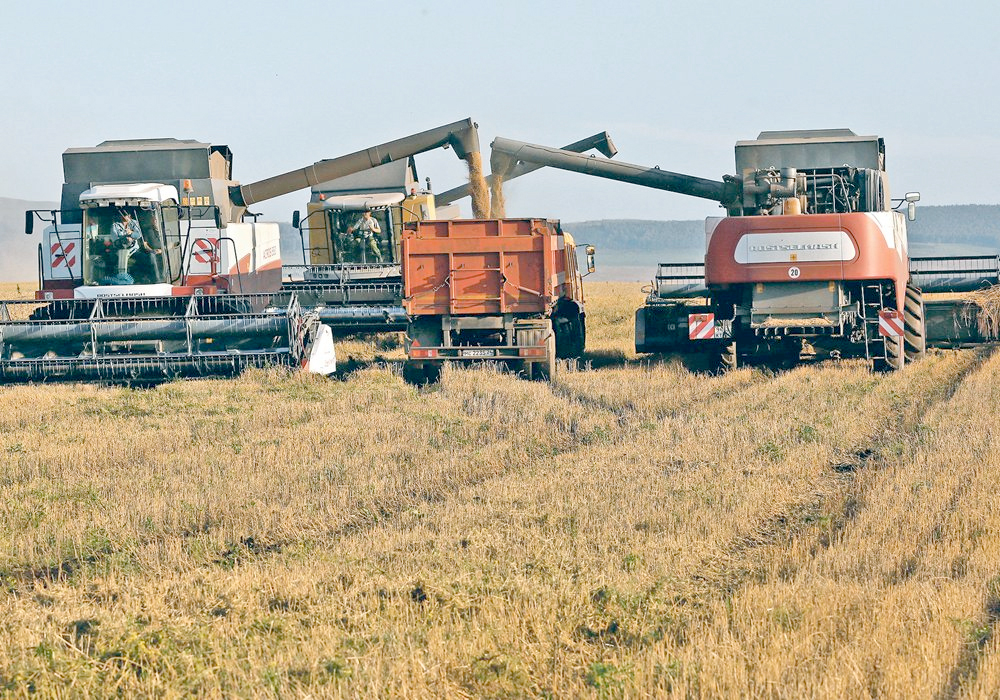Analysts forecast 80.1 million tonnes of production next year, down from the five-year average of 88.1 million tonnes
SASKATOON — Early indications are that Russia may harvest another disappointing wheat crop in 2025.
SovEcon is forecasting 80.1 million tonnes of production, down from 81.5 million tonnes this year and the five-year average of 88.1 million tonnes.
Related stories:
Total wheat area is forecast to remain unchanged at about 70 million acres, with winter wheat plantings down and spring acres up.
Read Also

Saskatchewan puts crown land auction on hold
Auctions of Saskatchewan crown lease land are once again on hold.
Dry conditions are proving problematic for the winter crop.
“Topsoil moisture reserves are very low and in many regions wheat is entering the winter in the worst shape in recent years,” SovEcon analyst Andrey Sizov said in an email.
“This is likely to lead to a below-average winter wheat yield in 2025.”
He is forecasting an average 2025 winter wheat yield of 51 bushels per acre, the lowest since 2019.
“The recent rain somewhat helped, and the current warm weather is extending the time window for plant development,” said Sizov.
There have been improvements in the south and south-central regions, but crop conditions in all the main winter wheat regions remain below average.
He believes exports in 2025-26 will likely drop below 40 million tonnes due to another modest crop and declining stocks. That compares to the 45.9 million tonnes forecast for the current crop year.
Ukraine is the other big player in the Black Sea region.
SovEcon is forecasting 21.1 million tonnes of wheat production in that war-torn country in 2025, down from 21.8 million tonnes this year and an average of 24.2 million tonnes.
“Crop conditions have improved substantially in October, thanks to ample rain offsetting earlier dryness, (primarily) in the southwest,” said Sizov.
He believes the Black Sea region could generate some bullish and bearish news in 2024-25.
On the bullish side is the state of Russia’s 2025 wheat crop with high winterkill risks due to the poor condition of the plants.
There’s also the growing intervention from Russia’s agriculture ministry, which is likely to result in a slowdown of exports.
And then there’s the omnipresent war risks with the continuing conflict in Ukraine.
On the bearish side there is the potential start of peace negotiations between Russia and Ukraine following the U.S. presidential election.
One item that is likely to be a non-factor is last year’s announcement of a megadeal between China and a Russian grain trader.
Food Export Trade LLC (FET) announced last October that it had signed a US$26 billion contract to supply China with 70 million tonnes of grains, pulses and oilseeds over the next 12 years.
FET is part of the New Land Grain Corridor (NLGC), a US$480 million project comprised of FET, Grain Terminal Zabaikalsk, Container Terminal Zabaikalsk and Siberian Grain Project LLC, according to the NLGC web site.
Sizov is skeptical of the 70 million tonne grain deal.
“We believe there is a high chance that a strict binding agreement with such volume doesn’t exist,” he said.
What makes the report even more dubious is that the firm claims it already sold 100 million tonnes of grain to China before the announcement of the 70 million tonne agreement.
However, according to FET’s website, the firm only sent one train to China over the past year, which would amount to 2,000 to 3,000 tonnes of grain.
Sizov noted that total Russian grain shipments to China in the last year amounted to 2.4 million tonnes, with wheat accounting for 200,000 tonnes of that total.
Contact sean.pratt@producer.com
















